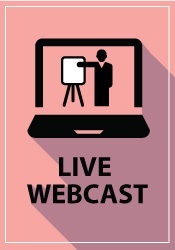

Identifying Visual Challenges and HOW TO TREAT THEM
How can you properly assess and make functional changes in the vision of a client who has experienced a neurological event, such as CVA or TBI? In six hours, you will explore vision and vision-related deficits that occur after such a tragedy and how to improve function and independence in your clients with the implementation of three crucial steps. First, perfect your evaluation techniques with interactive labs so that you can implement them the next day. Second, you gain new intervention strategies that include compensation and remedial-based treatments that focus on function and return to daily life. Best of all, most of these exceptional strategies will have minimal to no financial impact in the clinic. Lastly, your advocacy and care of these clients will be immensely enhanced by learning the documenting tips and tricks to justify insurance coverage. Walk away with new and ready-made tools – and a new lens – to accurately see and treat your clients.
| File type | File name | Number of pages | |
|---|---|---|---|
| Manual (7.29 MB) | 88 Pages | Available after Purchase |
MICHELLE MIODUSZEWSKI, MS, OTR/L, has been practicing occupational therapy since 2000 in acute, inpatient rehabilitation, and outpatient settings. However, ever since her thesis work focused on the impact of FIM testing for patients with a CVA in the CMS PPS, she has made the pointed effort to work with the neurological population. Currently, Ms. Mioduszewski owns and operates Niagara Therapy, LLC, a team-oriented practice based in Erie, PA that offers OT, PT, and SLP to adults and children with neurological concerns. She is the AOTA Representative Assembly Representative for PA, National MS Society Board Member for the Clinical Advisory Committee and has National MS Society Partner in Care Designation. A graduate of D’Youville College in Buffalo, NY with a bachelor’s and master’s degree in occupational therapy, she was the youngest person to receive the Delta Sigma Award from the Marguerite D’Youville College Honor Society. Ms. Mioduszewski is NDT and NEURO-IFRAH (NDTC) Trained, Bioness Certified, REO Certified, SAEBO Certified, and specialized in vision and cognitive rehabilitation. A published writer by AOTA Press, she also teaches on topics such as IASTM, Neuro-Rehab/NDT/NEURO-IFRAH (NDTC), vision, cognition, spasticity, and complex wheelchair evaluations.
VISION & VISION REHAB
DIAGNOSIS: VISUAL ACUITY & VISUAL FIXATION
DIAGNOSIS: OCULAR MOTOR ALIGNMENT & DEPTH PERCEPTION
DIAGNOSIS: VISUAL FIELD CUT & HEMI-SPATIAL NEGLECT
DIAGNOSIS: PUSHER SYNDROME/MIDLINE ORIENTATION SHIFT
DOCUMENTATION & ADVOCACY FOR COVERAGE
| 5 |
|
| 4 |
|
| 3 |
|
| 2 |
|
| 1 |
|
Satisfaction Guarantee
Your satisfaction is our goal and our guarantee. Concerns should be addressed to: PO Box 1000, Eau Claire, WI 54702-1000 or call 1-800-844-8260.
ADA Needs
We would be happy to accommodate your ADA needs; please call our Customer Service Department for more information at 1-800-844-8260.
Please wait ...